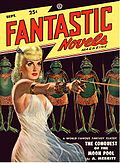User:Allard
Hello and a warm welcome to all my fellow Wikipedians. How nice of you to drop in to see who I am!
Morning>
Wikipedia & me:
[edit]How I discovered Wikipedia, I do not remember. But from being a reader I slowly became a contributor. Although I don't work that much on Wikipedia I do see myself as a Wikipedian. I don't go searching on Wikipedia what I can edit next, I edit what I find and want to do. This means I add and mainly improve a lot of small things and only rarely I make large edits.
My work:
[edit]Articles I've started on Wikipedia:
- Fort Knox Bullion Depository
- Animals are Beautiful People
- Template:David Attenborough Television Series
- Template:Malta Islands
Images I made for Wikipedia:
 Dutch lower house as from 2006
Dutch lower house as from 2006 New image of the Netherlands Air Force Roundel
New image of the Netherlands Air Force RoundelMap on membership of the League of Nations
United Nations membership map
 Improved image of the British Helgoland flag
Improved image of the British Helgoland flag New image showing the current flag of Hel(i)goland
New image showing the current flag of Hel(i)goland
Article guide:
[edit]A list of articles worth looking at, if one can find them:
- Antidisestablishmentarianism
- Ball's Pyramid
- British Isles (terminology)
- Eadweard Muybridge
- Gunpowder Plot
- Horace de Vere Cole
- Humphrey (cat)
- Islomania
- List of countries by date of nationhood
- List of flags
- List of people who died on their birthdays
- List of regnal numerals of future British monarchs
- List of unusual deaths
- Northwest Angle
- Quadripoint
- Racetrack Playa
- Rule of tincture
- San Gimignano
- Transcontinental country
- Undivided India & Partition of India
- Voyager Golden Record
- Web colors
- Winchester Mystery House
And there's always the Random article
And to all citizens of the European Union, please read this: Oneseat.eu
News
[edit]- Daniel Noboa (pictured) is re-elected president of Ecuador.
- Peruvian writer and Nobel Prize in Literature laureate Mario Vargas Llosa dies at the age of 89.
- A nightclub roof collapse in Santo Domingo, Dominican Republic, kills 231 people.
- In basketball, the UConn Huskies win the NCAA Division I women's championship and the Florida Gators win the men's championship.
Selected anniversaries
[edit]April 20: Easter (Christianity, 2025); first day of Ridván (Baháʼí Faith, 2025); 420 (cannabis culture)
- 1535 – Sun dogs were observed over Stockholm, Sweden, inspiring Vädersolstavlan (pictured), the oldest coloured depiction of the city.
- 1657 – Anglo-Spanish War: The English navy sank much of a Spanish treasure fleet at the Battle of Santa Cruz de Tenerife off the Canary Islands, but was unable to capture the treasure.
- 1968 – Pierre Trudeau was sworn in as prime minister of Canada, succeeding Lester B. Pearson.
- 2004 – An incomplete tunnel leading to the Nicoll Highway MRT station in Singapore collapsed, resulting in four deaths and the station's relocation.
- 2010 – An explosion on Deepwater Horizon, an offshore rig in the Gulf of Mexico, resulted in the largest marine oil spill in history.
- William Bedloe (b. 1650)
- David Brainerd (b. 1718)
- Frances Ames (b. 1920)
- Kojo Laing (d. 2017)
Did you know...
[edit]- ... that the Jesus Guy (pictured) does not portray Jesus, nor does he claim to be Jesus?
- ... that the Sasradilaga rebellion in 1827–1828 devastated the Javanese town of Rajekwesi, causing it to be rebuilt under the new name of Bojonegoro?
- ... that ROLM's first product was a military computer, even though Robert Maxfield was the only one of its four co-founders with computer experience?
- ... that up to forty greater bamboo bats will roost in a single bamboo shoot?
- ... that a former street musician's villa was used for high-society gatherings in Chișinău before the Russian Revolution?
- ... that the Union Navy, despite being embroiled in the American Civil War, built the Wampanoag-class frigates for a planned war against Great Britain?
- ... that eight horses ridden by rebel commander Sentot Prawirodirdjo were killed during the Java War?
- ... that Pope Sixtus IV gave the Montalto Reliquary to his home town in 1586?
- ... that during a Game Developers Conference showcase of #IDARB, people were "blown away by how stupid it was"?
Today's featured article
[edit]Fantastic Novels was an American science-fiction and fantasy pulp magazine published by the Munsey Company of New York from 1940 to 1941, and by Popular Publications from 1948 to 1951. It was launched as a bimonthly companion magazine to Famous Fantastic Mysteries in response to heavy demand for book-length reprints of stories from pulp magazines such as Amazing Stories and Argosy. It ran science-fiction and fantasy classics from earlier decades, including novels by A. Merritt, George Allan England, Victor Rousseau and others, and occasionally published reprints of more recent work, such as Earth's Last Citadel by Henry Kuttner and C. L. Moore. There were five issues in the magazine's first incarnation and another twenty in the revived version from Popular Publications, along with seventeen Canadian and two British reprints. Mary Gnaedinger edited both series; her interest in reprinting Merritt's work helped make him one of the better-known fantasy writers of the era. (Full article...)











